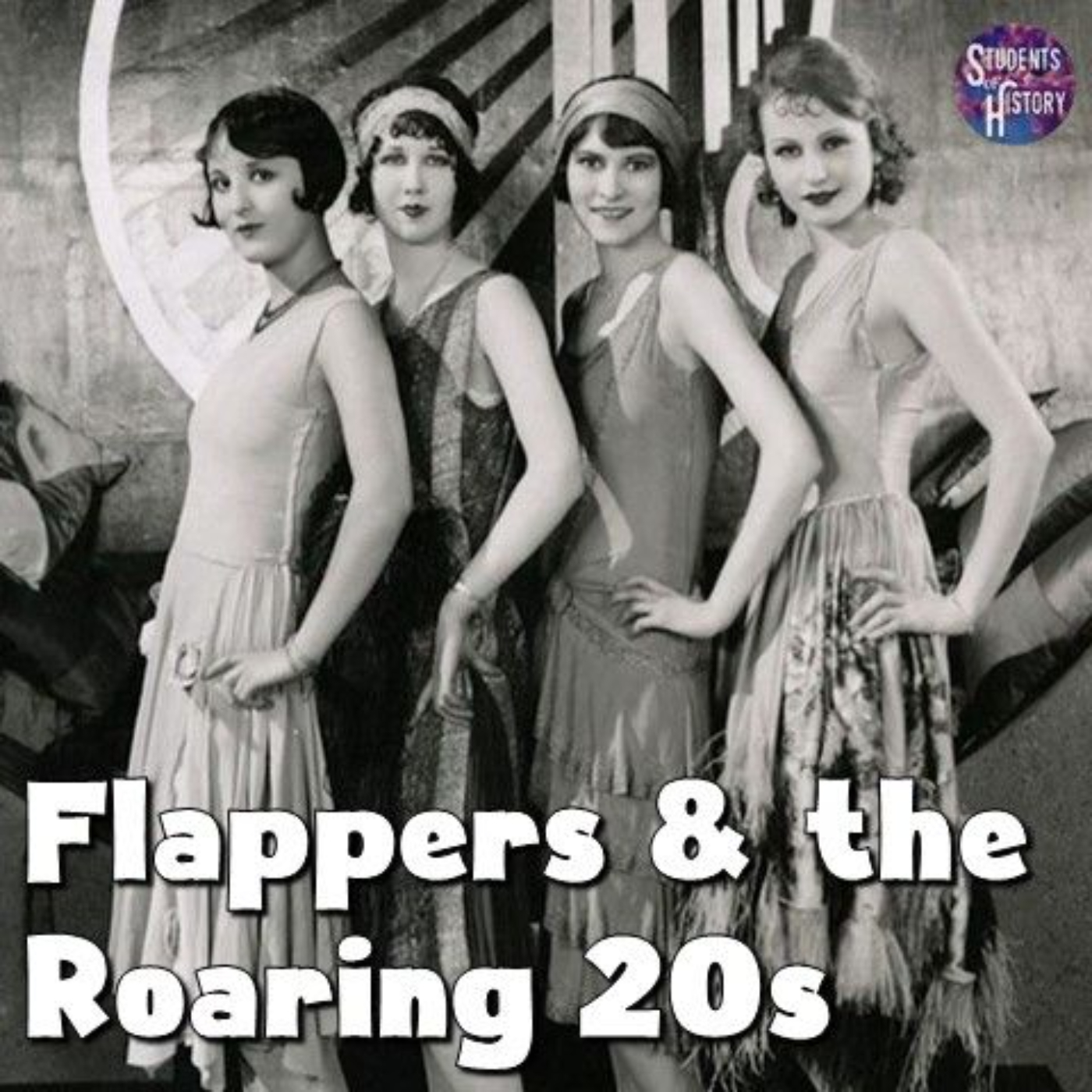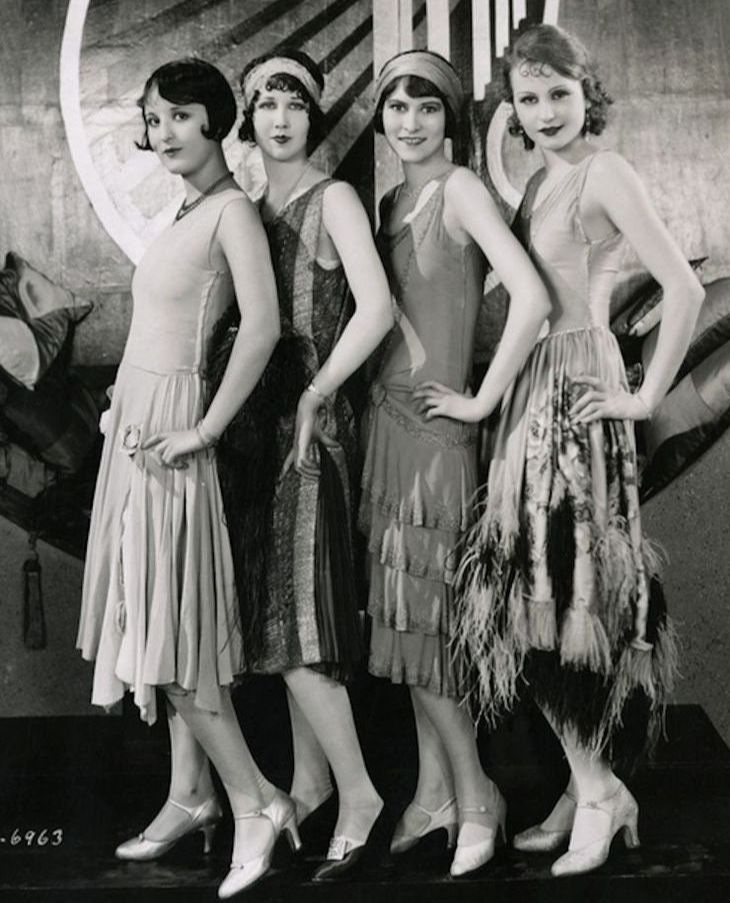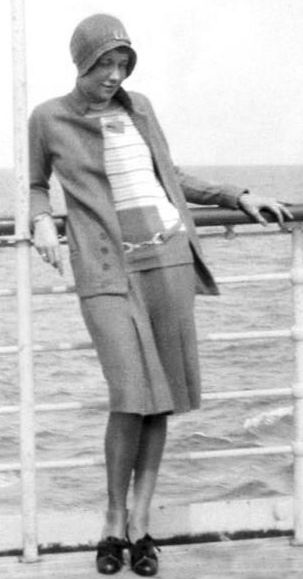Flappers & Jazz in the Roaring 20's

Flappers were the living symbol of the Roaring Twenties. The term describes the generation of young, stylish women in the 1920s. They wore short skirts (at the knee, which was short for that era), bobbed their hair, listened to jazz, and flaunted their disdain for what was considered "acceptable behavior".
Flappers were seen as brash for wearing excessive makeup, drinking alcohol, smoking cigarettes in public, and otherwise flouting social norms. As automobiles became available, flappers gained freedom of movement and privacy.
One cause of the change in young women's behavior was World War I which ended in November 1918. The death of large numbers of young men in the war combined with the 1918 Spanish flu epidemic which killed millions more, inspired in young people a feeling that life is short. Young women wanted to enjoy their lives and freedom rather than stay at home and wait for a man to marry them.
Political changes were another cause of the flapper culture. Women finally won the right to vote in the United States on August 26, 1920. Women wanted to be the social equal of men. They were faced with the difficult realization of the larger goals of feminism: individuality, full political participation, and economic independence.

In addition, many women had more opportunities in the workplace and had even taken traditionally male jobs such as doctors, lawyers, engineers and pilots.
The rise of consumerism promoted the ideals of "fulfilment and freedom", which encouraged women to think independently about their garments, careers, and social activities.

The evolving image of flappers was of independent young women who went by night to jazz clubs such as those in Harlem, which were viewed as scandalous.
Jazz music originated in the African American communities of New Orleans in the late 19th and early 20th centuries.
It gained in popularity during the during the 20's in cities like Chicago and New York.
Similar to flappers, jazz began to get a reputation as being immoral, and some older generations saw it as threatening their cultural values and promoting the new decadent values of the Roaring Twenties.
Ruth Gillettes, a 1920s singer, had a song called "Oh Say! Can I See You Tonight?" which expresses the new behavior of girls in the 1920s.
Prior to this era, it was considered impossible for a woman to call a man to suggest a date. But in the 1920s, many girls seemed to play a leading role in relationships, actively asking boys out or even coming to their homes.
While flappers were often regarded as threatening to conventional society at the time, today flappers are something of a cultural heroine. The flapper stands as one of the enduring images of youth and women in the 20th century.